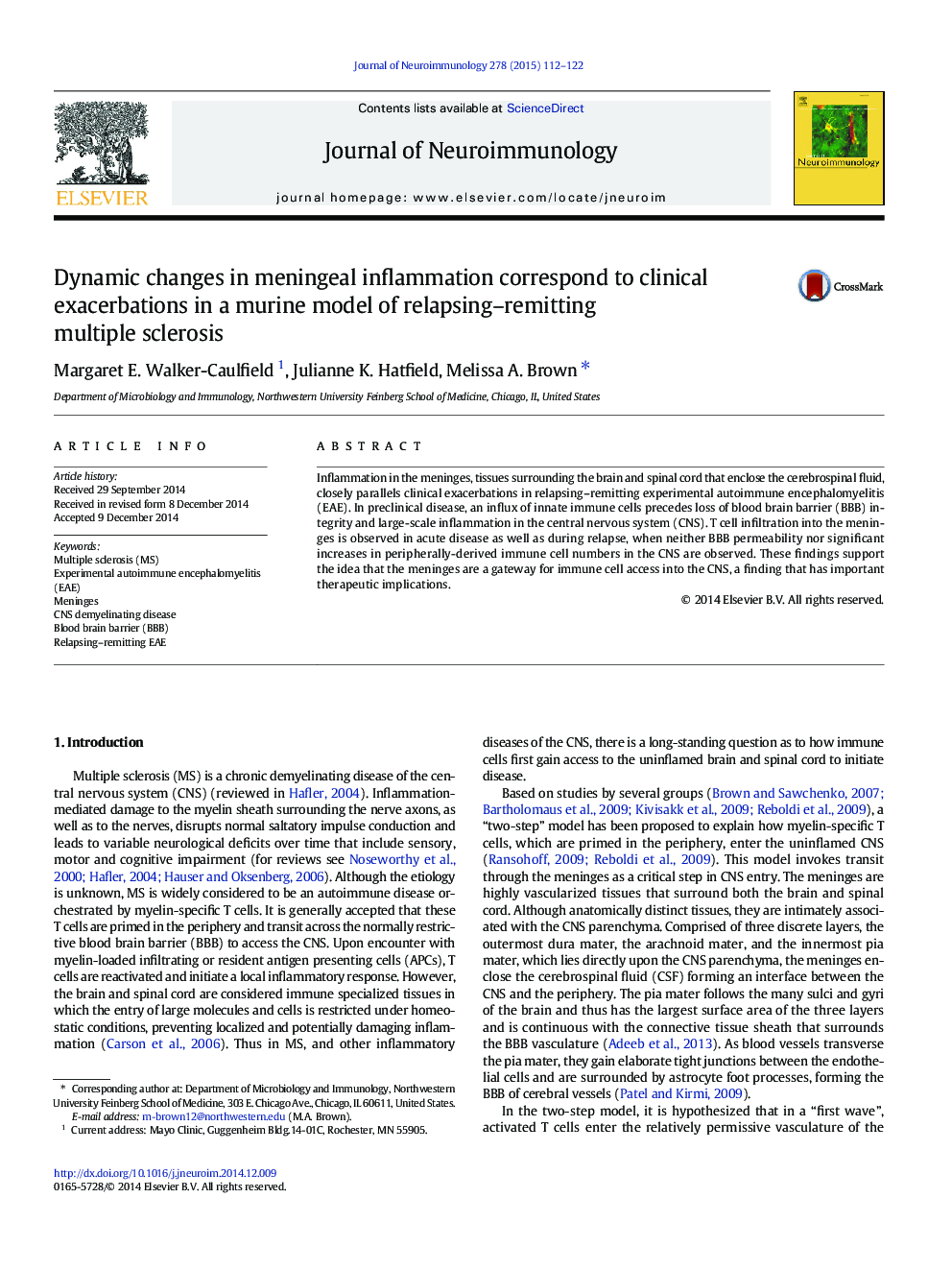| Article ID | Journal | Published Year | Pages | File Type |
|---|---|---|---|---|
| 6020322 | Journal of Neuroimmunology | 2015 | 11 Pages |
â¢Meningeal inflammation parallels remittances and relapses in a murine model of MS.â¢An influx of PMNs, MÏ, and DCs predominates in the meninges in pre-clinical disease.â¢Meningeal inflammation precedes T cell influx to the CNS and clinical disease onset.â¢PMN influx to the meninges and CNS immune infiltration is dependent on intact c-kit signaling.â¢The meninges serve as gateways to pathologic immune cell entry into the CNS in EAE.
Inflammation in the meninges, tissues surrounding the brain and spinal cord that enclose the cerebrospinal fluid, closely parallels clinical exacerbations in relapsing-remitting experimental autoimmune encephalomyelitis (EAE). In preclinical disease, an influx of innate immune cells precedes loss of blood brain barrier (BBB) integrity and large-scale inflammation in the central nervous system (CNS). T cell infiltration into the meninges is observed in acute disease as well as during relapse, when neither BBB permeability nor significant increases in peripherally-derived immune cell numbers in the CNS are observed. These findings support the idea that the meninges are a gateway for immune cell access into the CNS, a finding that has important therapeutic implications.
Graphical abstractDistinct inflammatory profiles in the CNS and meninges reveal a prominent role for meningeal inflammation in EAE disease initiation and relapses.Graphical comparison of the kinetics of CNS and meningeal inflammation over the course of RR-EAE. Pronounced CNS inflammation as determined by inflammatory cell infiltration (green line) and BBB permeability (orange line) is observed only during acute disease, while new waves of meningeal inflammation (purple line) correspond more closely with both acute and relapsing clinical disease (blue line).Download high-res image (172KB)Download full-size image
